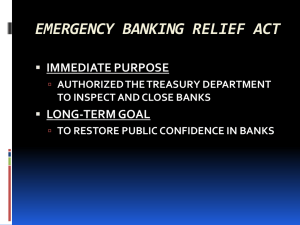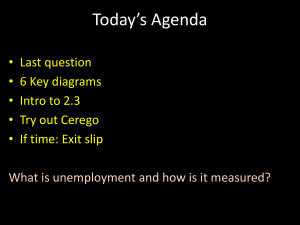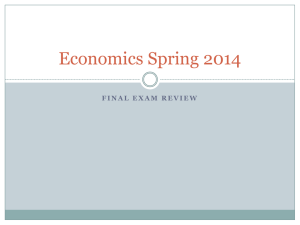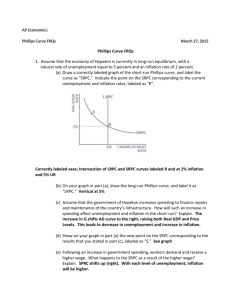HW4 - San Francisco State University
advertisement
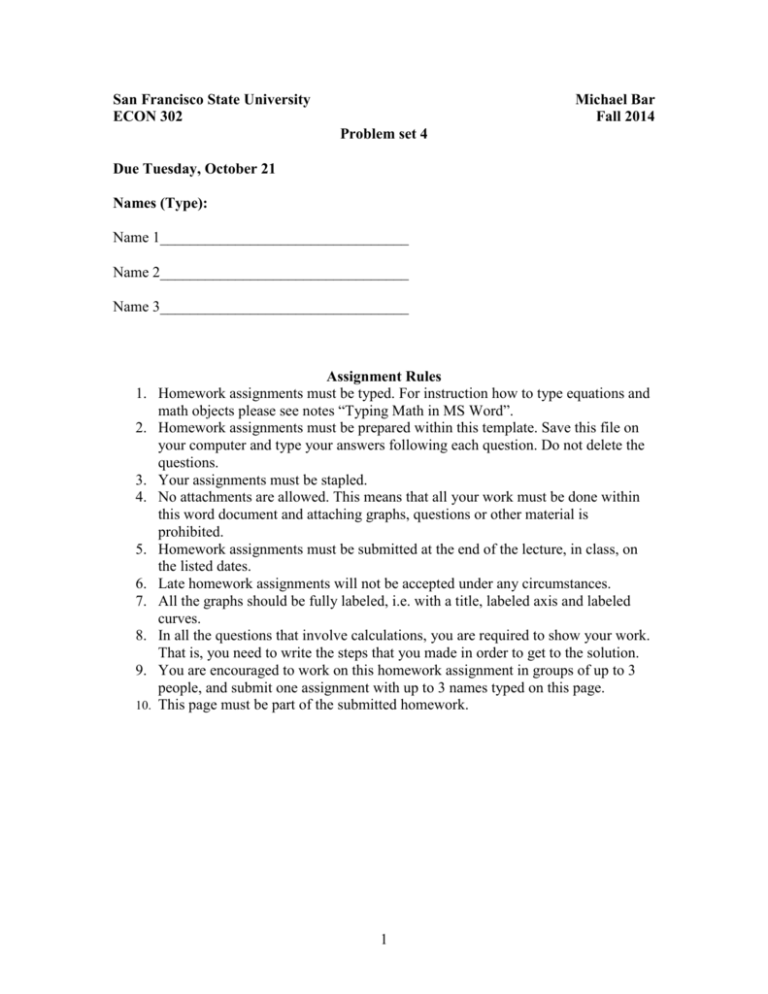
San Francisco State University ECON 302 Michael Bar Fall 2014 Problem set 4 Due Tuesday, October 21 Names (Type): Name 1_________________________________ Name 2_________________________________ Name 3_________________________________ 1. 2. 3. 4. 5. 6. 7. 8. 9. 10. Assignment Rules Homework assignments must be typed. For instruction how to type equations and math objects please see notes “Typing Math in MS Word”. Homework assignments must be prepared within this template. Save this file on your computer and type your answers following each question. Do not delete the questions. Your assignments must be stapled. No attachments are allowed. This means that all your work must be done within this word document and attaching graphs, questions or other material is prohibited. Homework assignments must be submitted at the end of the lecture, in class, on the listed dates. Late homework assignments will not be accepted under any circumstances. All the graphs should be fully labeled, i.e. with a title, labeled axis and labeled curves. In all the questions that involve calculations, you are required to show your work. That is, you need to write the steps that you made in order to get to the solution. You are encouraged to work on this homework assignment in groups of up to 3 people, and submit one assignment with up to 3 names typed on this page. This page must be part of the submitted homework. 1 Importance of Micro Foundations 1. (25 points). Visit the online Encyclopedia, Wikipedia, and search for “Lucas critique”. After reading this article, briefly answer the following questions. a. According to Robert Lucas, is policy advice based on “large-scale macroeconometric models” (developed from the Keynesian model discussed in class) valid? b. Why, or why not? c. Give an example of a parameter in the Keynesian model, which is not policy-invariant. d. Give an example of a parameter in the classical model, which is policy invariant. e. According to Robert Lucas, if we want to predict the effect of a policy experiment, what kind of models should we use? In particular, address the importance of Micro Foundations in these models. Keynesian Model 2. (25 points). Consider the Keynesian model discussed in class. Suppose that the economy is characterized by the following behavioral functions: C 75 0.75(Y T ) Consumption: Investment: I 100 Government spending: G 300 Taxes: T 100 0.2Y Full employment output: Y f 1200 a. Solve for the Keynesian equilibrium in the goods market. b. Suppose that investment falls by $10. Show how the government can restore the previous equilibrium output using its spending. c. Suppose instead that the investment falls by $10, but the government wants to restore the previous equilibrium using taxes. Find the required change in the autonomous tax that would restore the equilibrium output to its initial level. d. Suppose instead that the investment falls by $10, but the government wants to restore the previous equilibrium using taxes. Find the required change in the proportional tax rate that would restore the equilibrium output to its initial level. e. Based on the Keynesian model, answer the three basic questions that we asked in the introduction to the topic of business cycles: (1) what causes business cycles? (2) Can the government smooth them? (3) Should it? (1) What causes business cycles? (2) Can the government smooth them? (3) Should it? 2 3. 4. 5. 6. 7. Search Model of Unemployment (10 points). Consider the search model of unemployment studies in class. Illustrate with 3 fully labeled graph the impact of an increase in unemployment insurance benefits ( b ) on: (1) reservation wage w * , (2) probability of acceptance of job offers H (w*) , and (3) steady-state unemployment rate U * . (10 points). Consider the search model of unemployment studies in class. Illustrate with 3 fully labeled graph the impact of an increase in probability of getting a job offer ( p ) on: (1) reservation wage w * , (2) probability of acceptance of job offers H (w*) , and (3) steady-state unemployment rate U * . (10 points). Consider the search model of unemployment studies in class. Illustrate with 3 fully labeled graph the impact of an increase labor income tax ( t w ) on: (1) reservation wage w * , (2) probability of acceptance of job offers H (w*) , and (3) steady-state unemployment rate U * . (10 points). Consider the search model of unemployment studies in class. Illustrate with 3 fully labeled graph the impact of an increase in separation rate ( s ) on: (1) reservation wage w * , (2) probability of acceptance of job offers H (w*) , and (3) steady-state unemployment rate U * . (20 points). Extra credit. Using the mortgage calculator from the following page http://online.sfsu.edu/mbar/ESA.htm, answer the following questions. a. Suppose you take a mortgage of $700,000 for 30 years (360 monthly payments) at 5% annual interest rate. What is the sum of all the interest payments on this mortgage? b. Suppose that the above interest payments are tax deductable, and you are in the 35% income tax bracket. What is the total amount of tax deductions that you get as a subsidy of your mortgage? c. Suppose that you took the same mortgage, but your income tax bracket is only 25%. What is the total tax subsidy you get on the mortgage? d. Suppose that the above mortgage has adjustable rate, so that for the first two years the interest rate is only 1%, and it jumps to 8% after that. Calculate the monthly payment during the first two years and the monthly payment after that. 3
